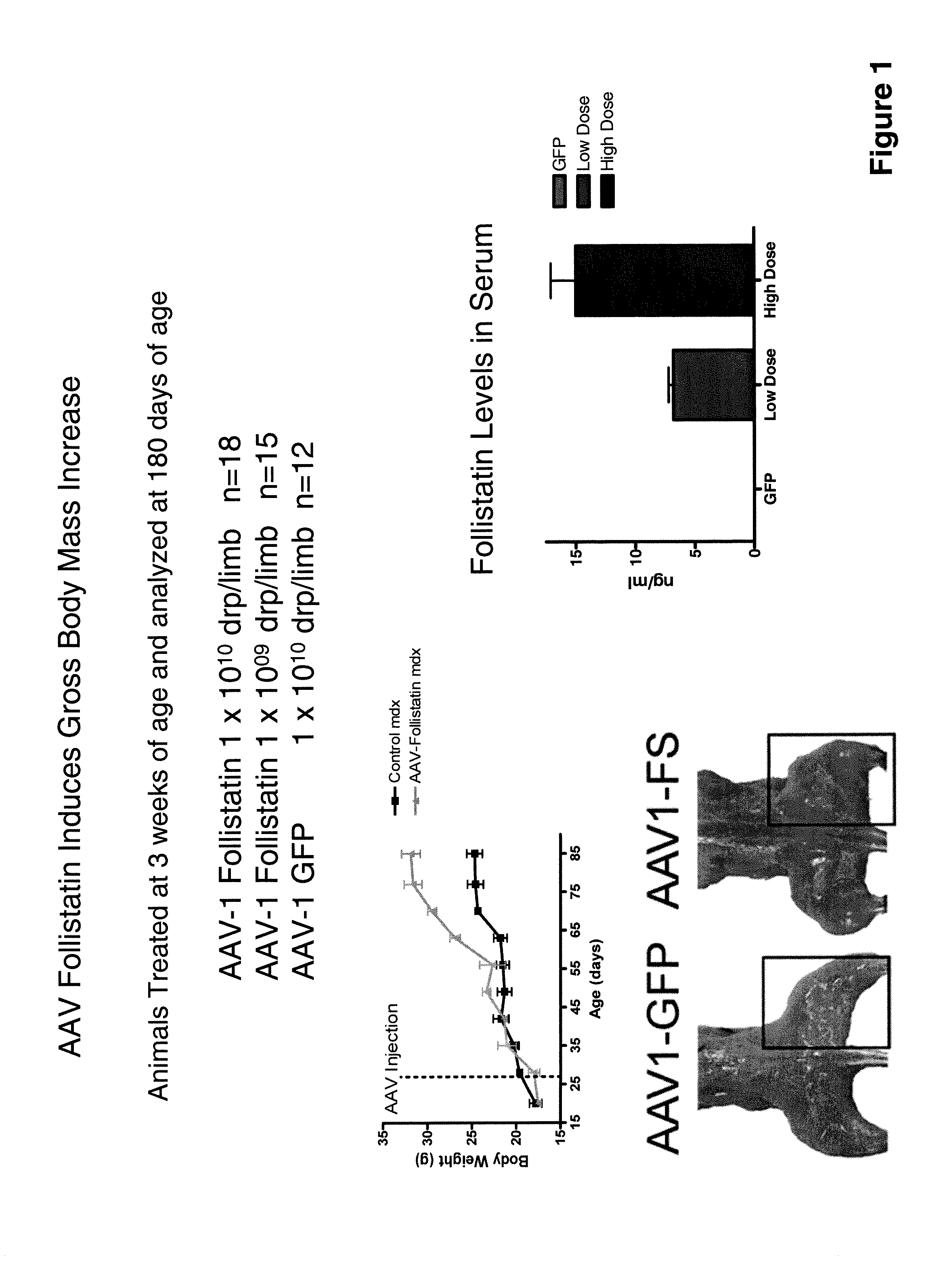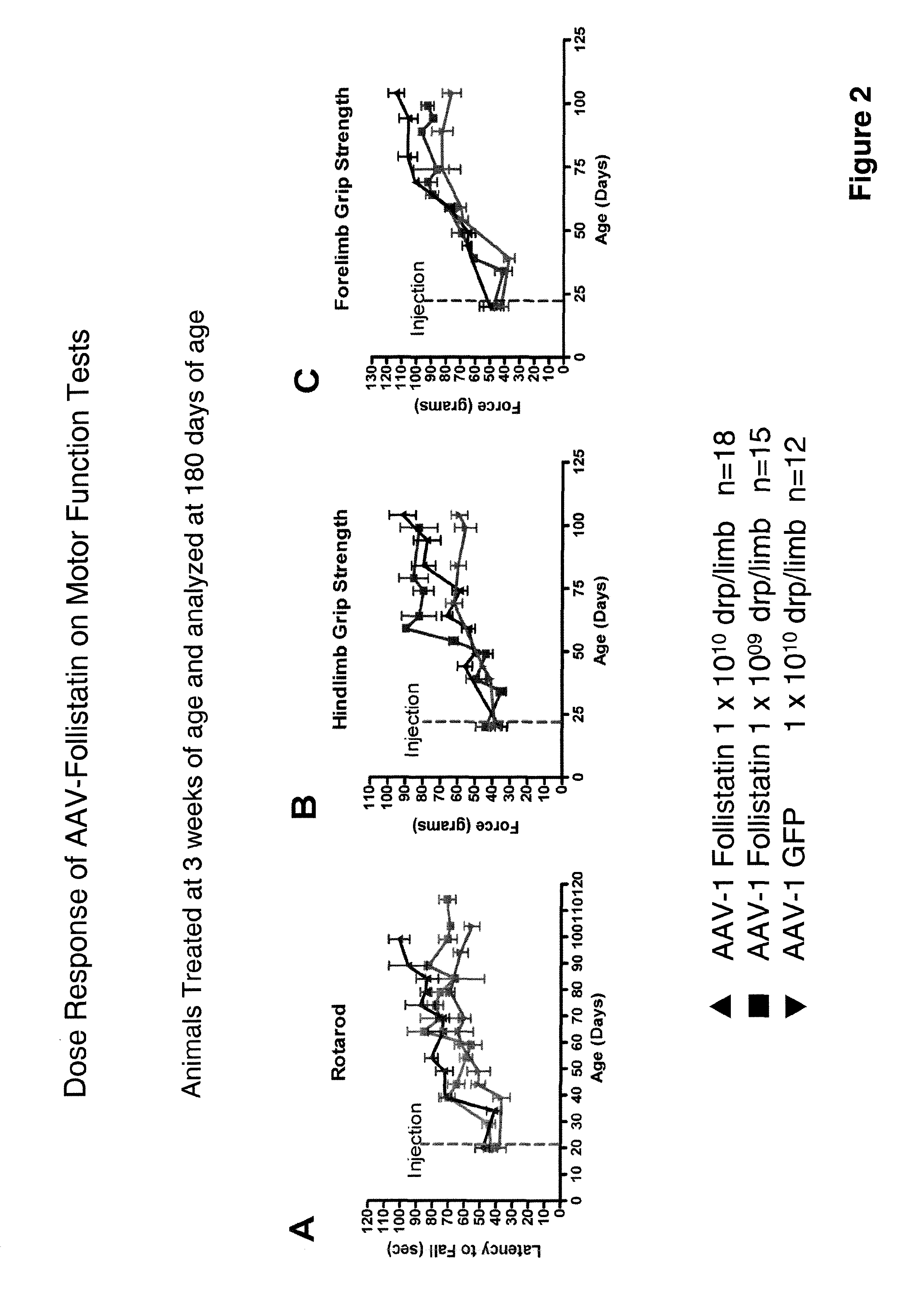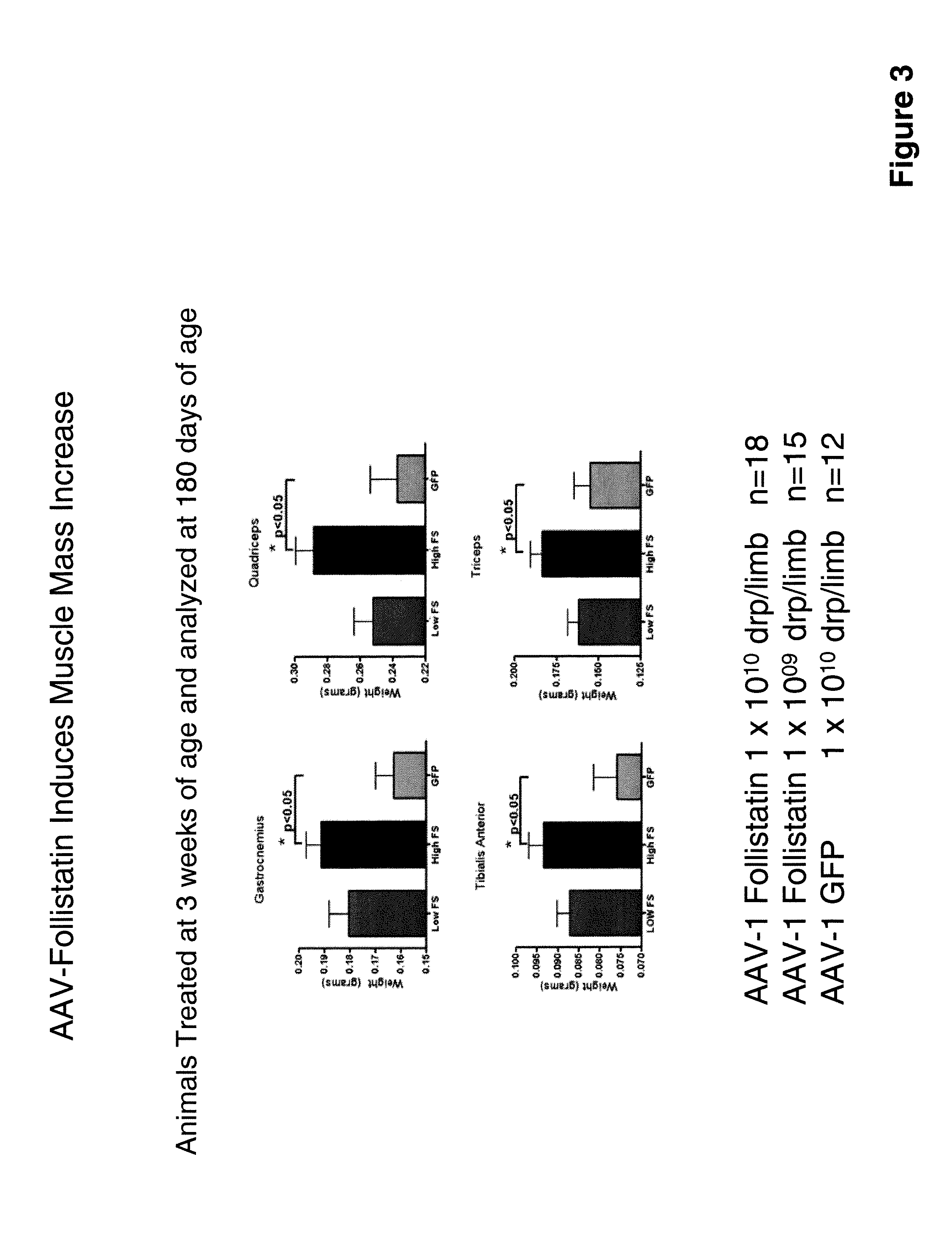Myostatin inhibition for enhancing muscle and/or improving muscle function
a technology of myostatin and muscle, applied in the direction of drug compositions, peptides, powder delivery, etc., can solve the problems of lack of effective treatment, lack of ambulation and wheelchair dependency, lack of urgency, etc., and achieve the effect of improving muscle function
- Summary
- Abstract
- Description
- Claims
- Application Information
AI Technical Summary
Benefits of technology
Problems solved by technology
Method used
Image
Examples
example 1
[0066]Limb-girdle muscular dystrophy Type 2D (LGMD2D) is a debilitating disease of children and young adults. Caused by a mutation in any one of at least fifteen different genes, some types of LGMD2D are autosomal dominant and others are autosomal recessive. LGMD2D progresses slowly, resulting in weakness and wasting first of the muscles around the shoulders and hips (limb girdles) and sometimes later the muscles involved in cardiopulmonary function. To date, there is no proven treatment to delay the disease progression. Alpha-sarcoglycan knock-out mice are animal models for LGMD2D [Duclos et al., J. Cell Biol., 142(6): 1461-1471 (1993)]. Experiments examining the effect of delivering follistatin using a rAAV are described below.
[0067]An AAV serotype 1 recombinant virus was constructed to encode a human follistatin DNA under the control of the strong human cytomegalovirus promoter. The rAAV was designated “rAAV follistatin UCSD”. The human follistatin DNA (SEQ ID NO: 1) was a kind g...
example 2
[0074]Amyotrophic Lateral Sclerosis (ALS), also known as Lou Gehrig's disease in the United States, is an adult onset disease that causes degeneration of motor neurons. The loss of motor neurons results in stiffness, atrophy of muscles, severe weakness of limb muscles, inability to walk, speak or swallow, and death two to five years after failure of the muscles that control respirations. Ten percent of ALS is familial and one fifth of these familial cases are caused by mutations in superoxide dismustase 1 (SOD 1). Transgenic mice and rats expressing a mutant human SOD1 transgene develop an ALS phenotype [Gurney et al., Science, 264: 1772-1775 (1994)]. Experiments examining effect of delivering follistatin using a rAAV are described below.
[0075]To test the ability for follistatin to reverse the myostatin-dependent inhibition on myoblast proliferation, C2C12 myoblasts were incubated with a growth inhibitory dose of myostatin (3 μg / ml) in the presence or absence of conditioned media fr...
example 3
[0084]Another AAV serotype 1 recombinant virus was constructed to encode a human follistatin DNA under the control of the strong human cytomegalovirus promoter. The rAAV was designated “rAAV follistatin-344”. The DNA and amino acid sequences of the follistatin encoded are respectively set out in SEQ ID NOs: 11 and 12. The rAAV follistatin-344 was administered to mdx mice (Bogdanovich et al., supra) which are an animal model of MD.
[0085]Eighteen three-week old mice were injected with 1×1010 drp / limb of the rAAV while fifteen three-week old mice received 1×109 drp / limb. Twelve other mice received 1×1010 drp / limb AAV-GFP. Results of the treatment are presented in FIGS. 1 through 17.
[0086]Treatment with rAAV follistatin-344 resulted in muscle enhancement and improved muscle function in the treated animals and it is contemplated that these results will translate into therapeutic benefit in human MD patients treated with a myostatin inhibitor of the invention.
PUM
| Property | Measurement | Unit |
|---|---|---|
| average time | aaaaa | aaaaa |
| time | aaaaa | aaaaa |
| pH | aaaaa | aaaaa |
Abstract
Description
Claims
Application Information
 Login to View More
Login to View More - R&D
- Intellectual Property
- Life Sciences
- Materials
- Tech Scout
- Unparalleled Data Quality
- Higher Quality Content
- 60% Fewer Hallucinations
Browse by: Latest US Patents, China's latest patents, Technical Efficacy Thesaurus, Application Domain, Technology Topic, Popular Technical Reports.
© 2025 PatSnap. All rights reserved.Legal|Privacy policy|Modern Slavery Act Transparency Statement|Sitemap|About US| Contact US: help@patsnap.com



